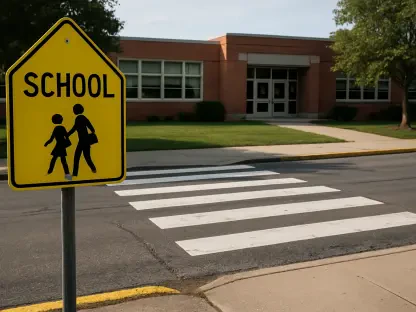In an era where technology permeates every aspect of life, a staggering statistic has emerged from recent research: nearly 80% of college students in the United States are turning to artificial intelligence (AI) tools to support their academic endeavors. This revelation, stemming from a comprehensive survey conducted by a prominent university, underscores a seismic shift in how higher education intersects with cutting-edge tech. Far from being a mere trend, this widespread adoption raises profound questions about the nature of learning, the pressures students face, and the ethical boundaries of using such tools. As universities grapple with policies to curb unauthorized AI use, the reasons behind this phenomenon demand closer scrutiny. What drives students to risk penalties for the sake of digital assistance? This growing reliance on AI is not just a technological shift but a reflection of deeper systemic and emotional undercurrents in academia today, setting the stage for a nuanced exploration of its implications.
The Scope and Scale of AI Adoption in Academia
Unpacking the Numbers Behind the Trend
The numbers paint a striking picture of AI’s foothold in higher education, with a survey of 460 college students revealing that 40.2% use AI tools very frequently, while another 38.9% do so occasionally. This near-universal reliance signals a departure from traditional study methods, as students increasingly turn to algorithms for help with essays, problem-solving, and research. Despite strict university policies labeling such usage as a form of plagiarism, the allure of AI persists, often in secret. The data suggests that this isn’t merely about convenience but a broader cultural shift in how academic challenges are approached. Many institutions have responded with bans and penalties, yet enforcement remains inconsistent, leaving a gray area where students weigh risks against perceived benefits. This pervasive trend highlights a disconnect between policy and practice, as the tools become embedded in daily academic routines, challenging the very definition of independent learning.
Institutional Policies Versus Student Behavior
While universities strive to uphold academic integrity through explicit bans on AI for graded work, the reality on the ground tells a different story, as students often bypass these rules with little fear of detection. The tension between institutional expectations and student behavior underscores a critical gap in enforcement and education about ethical tech use. Many students are aware of the risks—ranging from failing grades to expulsion—but the immediate advantages of AI, such as time-saving and polished outputs, often outweigh long-term consequences in their minds. Beyond policy, there’s a lack of dialogue about why these tools are so appealing, which could inform more effective strategies to address misuse. Some educators argue for integrating AI into curricula as a supervised tool rather than an outright ban, suggesting that prohibition alone fails to tackle the root causes. This clash between regulation and reality continues to shape the academic landscape, revealing a need for adaptive solutions.
Drivers and Consequences of AI Reliance
Emotional and Social Factors Fueling Usage
Delving into why students gravitate toward AI uncovers a complex web of emotional and social pressures rather than simple laziness, as is often assumed. Many express a preference for AI over traditional support from professors or tutors due to the anonymity it provides, shielding them from judgment or embarrassment when struggling with concepts. This points to a deeper issue of stigma in academic environments, where asking for help can feel like admitting defeat, especially under the weight of expectations to excel. The fear of damaging one’s reputation or self-confidence drives students to seek silent, non-human assistance, reflecting a generational challenge in navigating vulnerability. Economic uncertainties and the competitive job market further amplify the pressure to secure top grades, often at any cost. This dynamic suggests that AI’s appeal lies not just in its efficiency but in its role as a safe haven from perceived scrutiny, highlighting a critical need for cultural change in how academic support is offered and perceived.
Risks to Learning and Professional Readiness
The consequences of leaning heavily on AI extend far beyond academic dishonesty, striking at the heart of what education aims to achieve—genuine understanding and skill development. When students rely on AI to complete assignments, they risk bypassing the critical thinking and effort required to master subjects, potentially leaving them with significant knowledge gaps. These deficiencies may not surface immediately but can hinder professional competence later, where qualifications might not match real-world abilities. The joy of discovery and the satisfaction of personal growth through learning are also diminished, replaced by a transactional approach to education. While AI can serve as a supplementary tool, its overuse in graded work undermines the integrity of a student’s journey. Educators worry that without addressing this trend, future generations may enter the workforce ill-prepared, lacking the resilience and problem-solving skills honed through independent struggle. This long-term impact calls for a reevaluation of how technology is balanced with traditional learning values.
Shaping a Balanced Future for Tech in Education
Reflecting on the past, it’s evident that the surge in AI use among college students over recent years prompted intense debates within educational circles about technology’s role in learning. Institutions grappled with enforcing policies while students navigated the ethical gray areas of digital assistance, often driven by unspoken pressures and fears. Looking back, the challenge was not just about curbing misuse but understanding the emotional barriers that pushed students toward AI in the first place. Moving forward, a balanced approach emerged as a key consideration, blending stricter guidelines with initiatives to foster open dialogue about seeking help. Encouraging environments where vulnerability is destigmatized could reduce reliance on impersonal tools. Additionally, integrating AI as a supervised resource in curricula offers a path to harness its benefits without sacrificing integrity. As academia continues to evolve, addressing both technological and human elements remains essential to safeguarding the essence of education for future generations.









